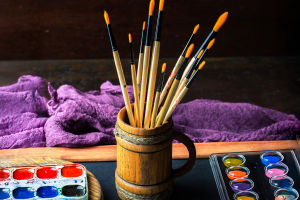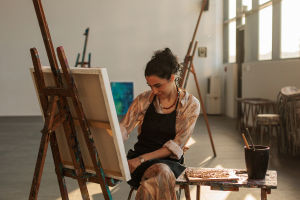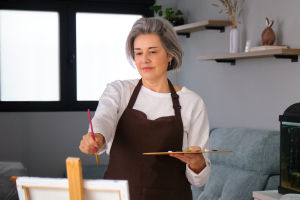The rise of artificial intelligence has revolutionized many fields, and art is no exception. AI-powered programs can now create paintings, sketches, and digital art that sometimes rival human creations in complexity and style.
This development raises a compelling question: can AI replace human painters? Let's explore this topic together and examine the unique qualities of human art and the potential and limits of AI in the artistic world.
Understanding AI's Artistic Capabilities
Artificial intelligence creates art mainly through machine learning and neural networks that analyze vast amounts of existing artworks. By recognizing patterns, styles, and techniques, AI can generate new images based on learned data. For example, AI can replicate impressionist brushstrokes or produce surrealist compositions.
These creations are impressive and can even be mistaken for human-made art. However, AI operates on algorithms and data, lacking true creativity or emotional experience.
The Human Element in Painting
Human painters bring emotions, personal experiences, and conscious choices to their art. The process of painting involves not only technique but also intuition, reflection, and a connection to the subject or theme. Each brushstroke can convey feelings that are deeply human, such as joy, sorrow, or protest.
This emotional depth is something AI currently cannot replicate because it does not feel or experience the world.
Creativity vs. Replication
AI excels at replication and variation based on existing art but struggles with true innovation. Creativity involves imagining something new and original, often breaking established rules or expressing a unique vision.
While AI can combine elements in novel ways, it does so by remixing learned information rather than generating original ideas from inspiration. Human creativity remains a vital and largely unmatched force in art creation.
Collaboration Between AI and Artists
Instead of viewing AI as a replacement, many artists see it as a powerful tool that enhances creativity. AI can help with brainstorming ideas, suggesting compositions, or automating repetitive tasks, freeing artists to focus on conceptual and expressive aspects.
This collaboration creates new possibilities and pushes artistic boundaries, demonstrating that AI can complement rather than replace human painters.
Ethical and Philosophical Questions
The rise of AI art also raises questions about authorship and value. Who owns an artwork created by AI? Can art produced without human feeling carry the same meaning or cultural significance? These debates show that art is more than just an image; it is a reflection of humanity, culture, and personal identity.
AI-generated art challenges traditional definitions but does not easily fit into existing frameworks.
Market and Audience Perspectives
The art market and audiences play a crucial role in determining the acceptance of AI art. Some collectors embrace AI creations for their novelty and technical skill, while others prefer the authenticity of human-made art. Public perception of AI art is still evolving, influenced by cultural attitudes toward technology and creativity.
Over time, new categories and values may emerge that recognize AI art as a distinct form rather than a substitute.
Conclusion: The Future of Painting
Can AI replace human painters? The answer is complex. AI brings impressive technical abilities but lacks the emotional depth, creativity, and lived experience that define human art. Instead of replacement, AI should be seen as a new medium and collaborator in artistic expression.
What do you think about AI's role in art? Would you consider AI art as deeply meaningful, or do you believe true artistry requires the human touch? Your thoughts matter in this ongoing conversation about creativity and technology.


